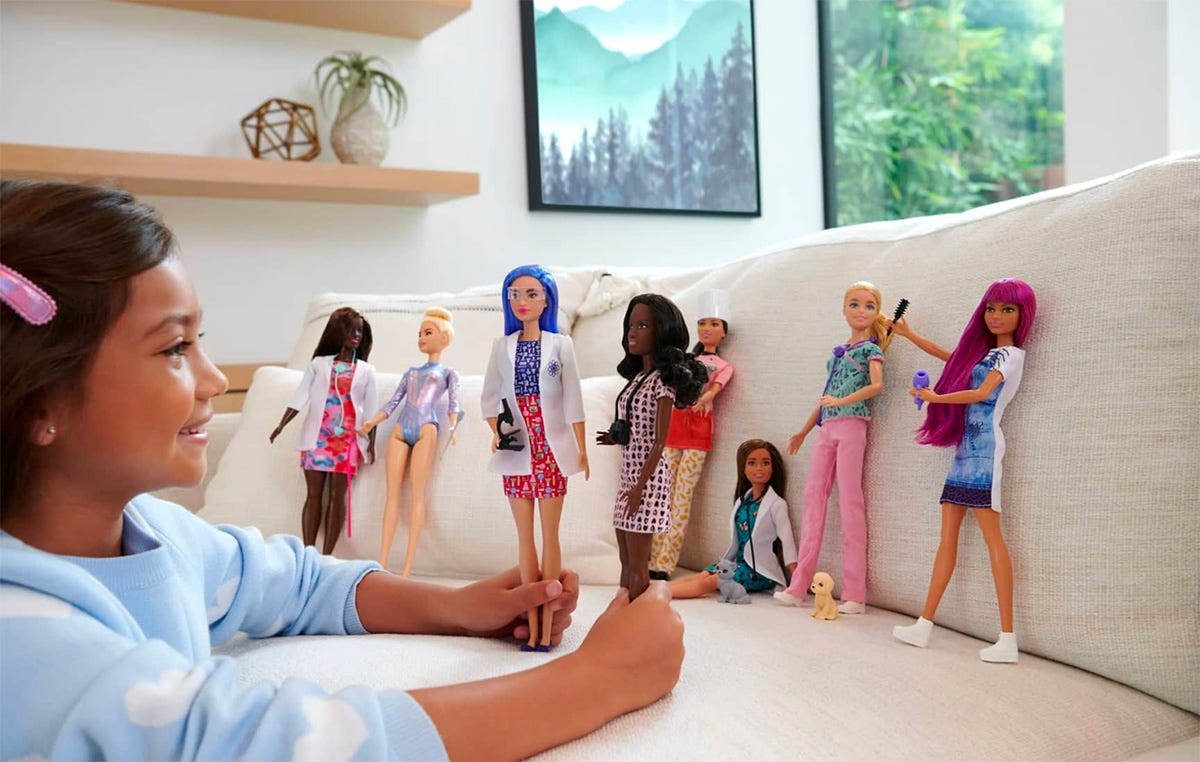
The Barbie movie trailer is out. Have you seen it? My first thoughts: the art direction is super fun, and I enjoyed recognising the chaotic weirdness of Venice Beach, which I visited last summer.
The biggest impression: A Barbie can do whatever she wants. There’s a Pulitzer winner, a supreme court judge, a lawyer, a doctor, and a Barbie with a Nobel Prize in physics. Of course, this isn’t her first rodeo — that was Western Barbie circa 1980 — Barbie has had a myriad of careers since her 1959 debut. So what?
Representation, that’s what.
It’s all about representation. Aided by a deft social media campaign, it’s positively spreading the word that Barbie, and therefore her viewers, can become anything.
For young people, growing up viewing thousands of hours of media where females are underrepresented or unmotivated impacts their beliefs. And when girls don’t see female characters on screen as biochemists, software developers, engineers, or statisticians, they are less likely to imagine or pursue those career paths for themselves. Gender equality researcher Helen Shen notes, “That effect is very, very powerful — this sense of not belonging.”
Jennifer Siebel Newsom’s 2011 documentary Miss Representation examined why women are underrepresented in positions of power and influence. The adage, “You can’t be what you can’t see,” rings true for many.
Recognising how this unconscious bias affects our actions and decisions (particularly at a tender age) is essential. Smart, equitable video and audio content — whether online or broadcast media — can effectively shape perceptions to drive positive social progress.
“The media is the message and the messenger and increasingly a powerful one.”
— Pat Mitchell
In 2012, the Geena Davis Institute on Gender in Media or See Jane analysed occupations in children’s media and found that for every 15 male characters shown in science, technology, engineering, and mathematics (STEM) professions, only one female character was portrayed in that role.
Fast forward nearly a decade, and good progress has been made, at least on screen. In 2021, men outnumber women by almost 80% in British STEM roles. Compare this with fiction: UK male STEM characters still outnumber female STEM characters roughly two-to-one, with the gap more apparent with leading characters (67.1% male).
Of course, visibility is about much more than gender. Today the institute has expanded its remit, analysing representations of six significant identities: gender, race/ethnicity, LGBTQIA+, disability, age 50+, and body type. A recent NYTimes article: How Sexist Is Hollywood? Check Out Geena Davis’s Spreadsheet.
Side note: Who knew that Geena was such a legend? She’s been spearheading this since 2004, practically the middle ages.
Tipping the balance
How can change, voice and presence be measured? Enter the Bechdel test. It is a sequence of three questions designed to measure the representation of women in film and fiction.
To pass, the test requires the following criteria be met:
The work must have at least two named women in it,
They have to talk to each other,
About something besides a man — Ken won’t do!
Why the three requirements? Researchers propose that viewers associate weaker stereotypes with women because females are seldom represented in the media as strong leaders and thinkers1.
What next?
One real-world tactic to improve equality and inclusion is positively modelling behaviour, especially in the workplace. Jennifer Tacheff, former VP of Partnerships and Growth at Women Who Code, said society needs to “promote, amplify, champion, and support women leaders.”
She explained that developing sound policy is essential — if no role models embody the culture at a leadership level, zero change will occur. Have you ever seen this play out in an organisation you’ve belonged to? I certainly have.

On their part, Barbie maker Mattel has started an initiative called ‘Closing The Dream Gap’ — recognising that by age five, many girls begin to develop self-limiting beliefs and think they're less intelligent and capable than boys.
By making the invisible visible through the media — even in the passenger seat of a saccharine Barbie car — we can start to affect changes in self-confidence and how women perceive their limits.





